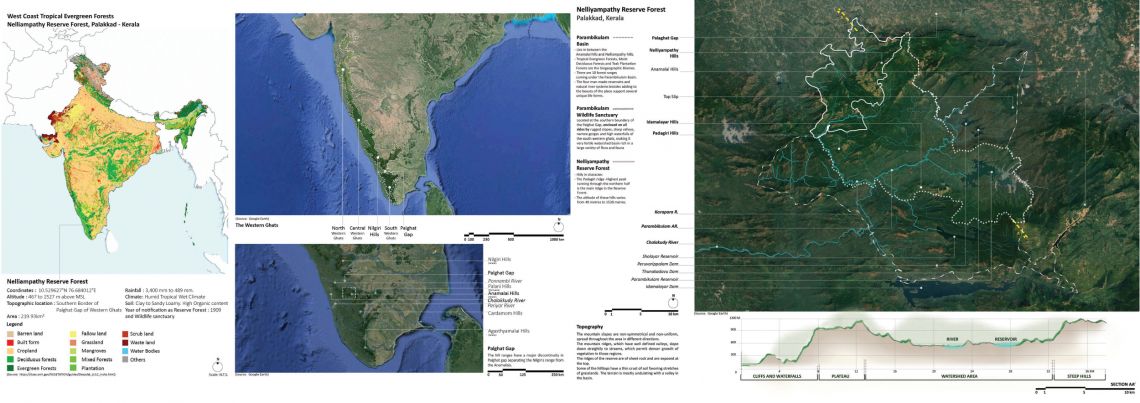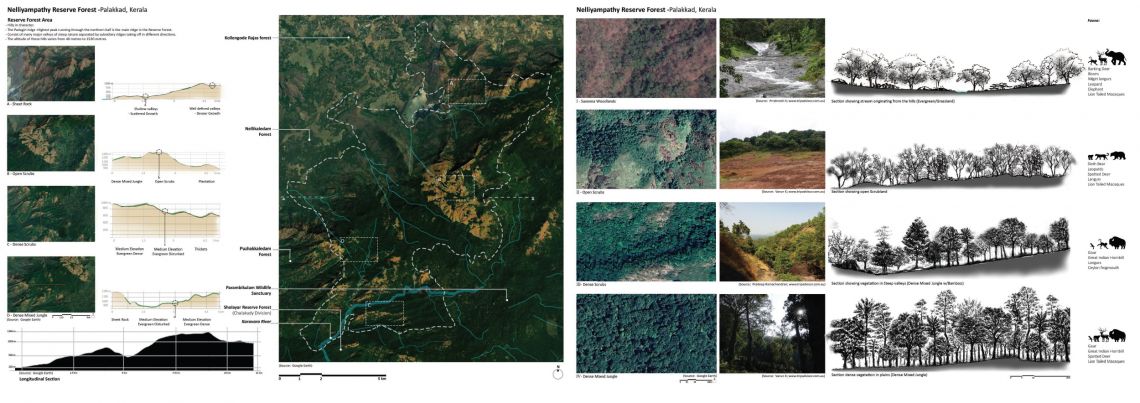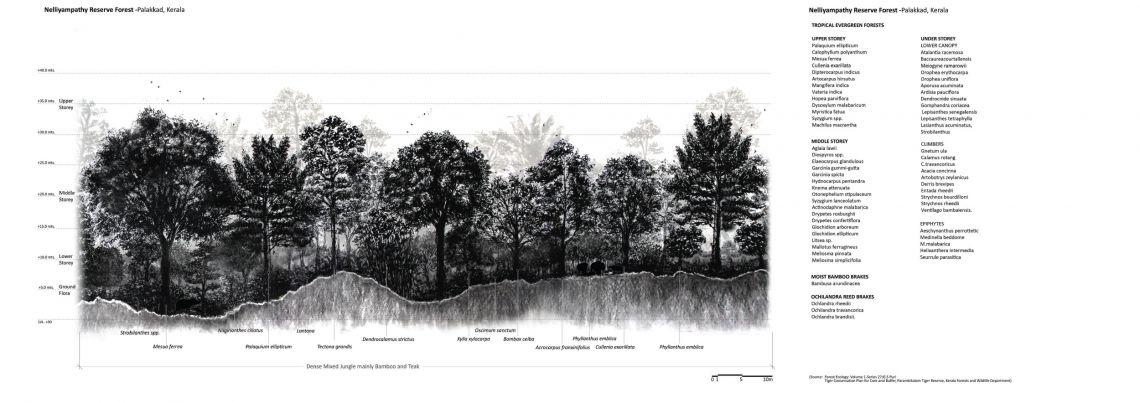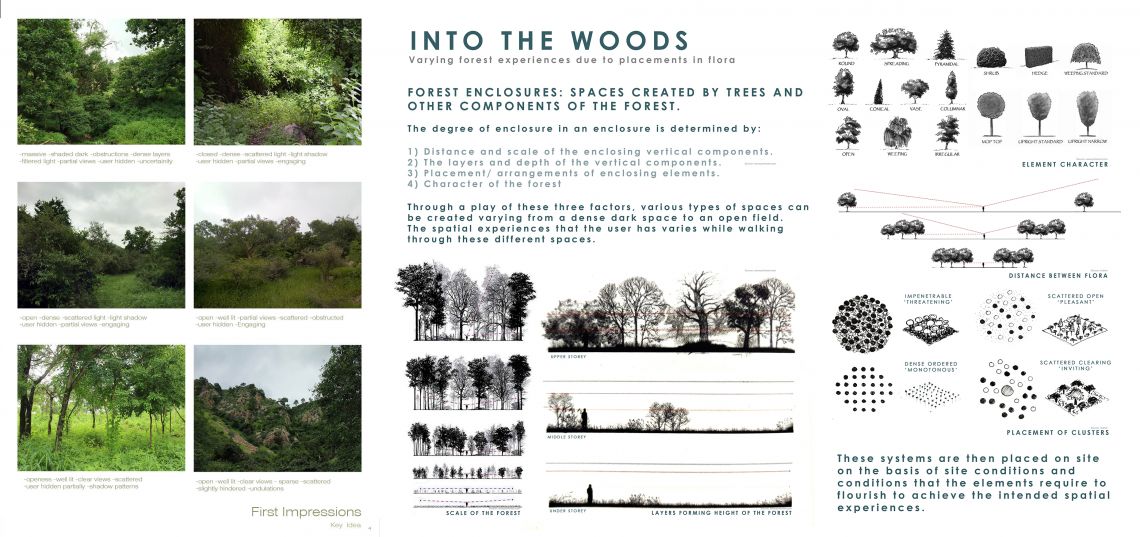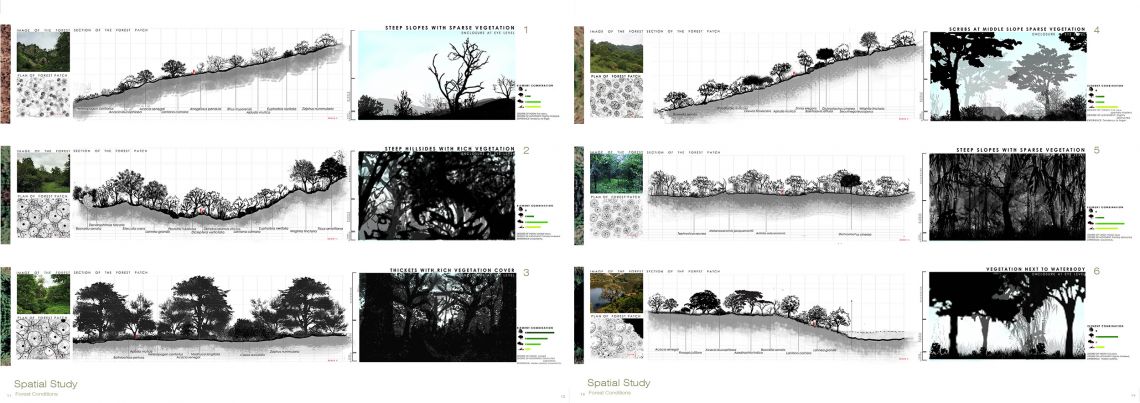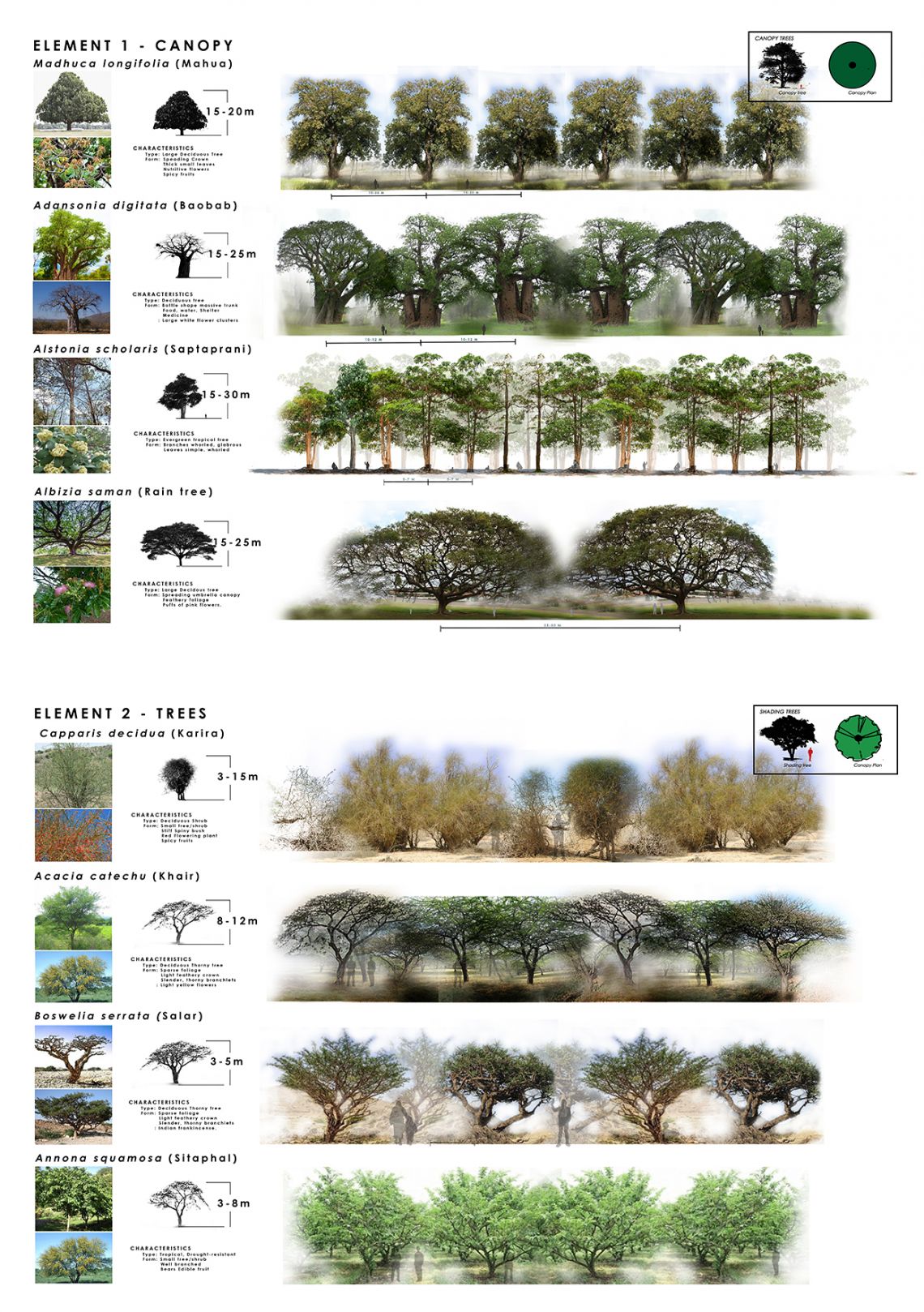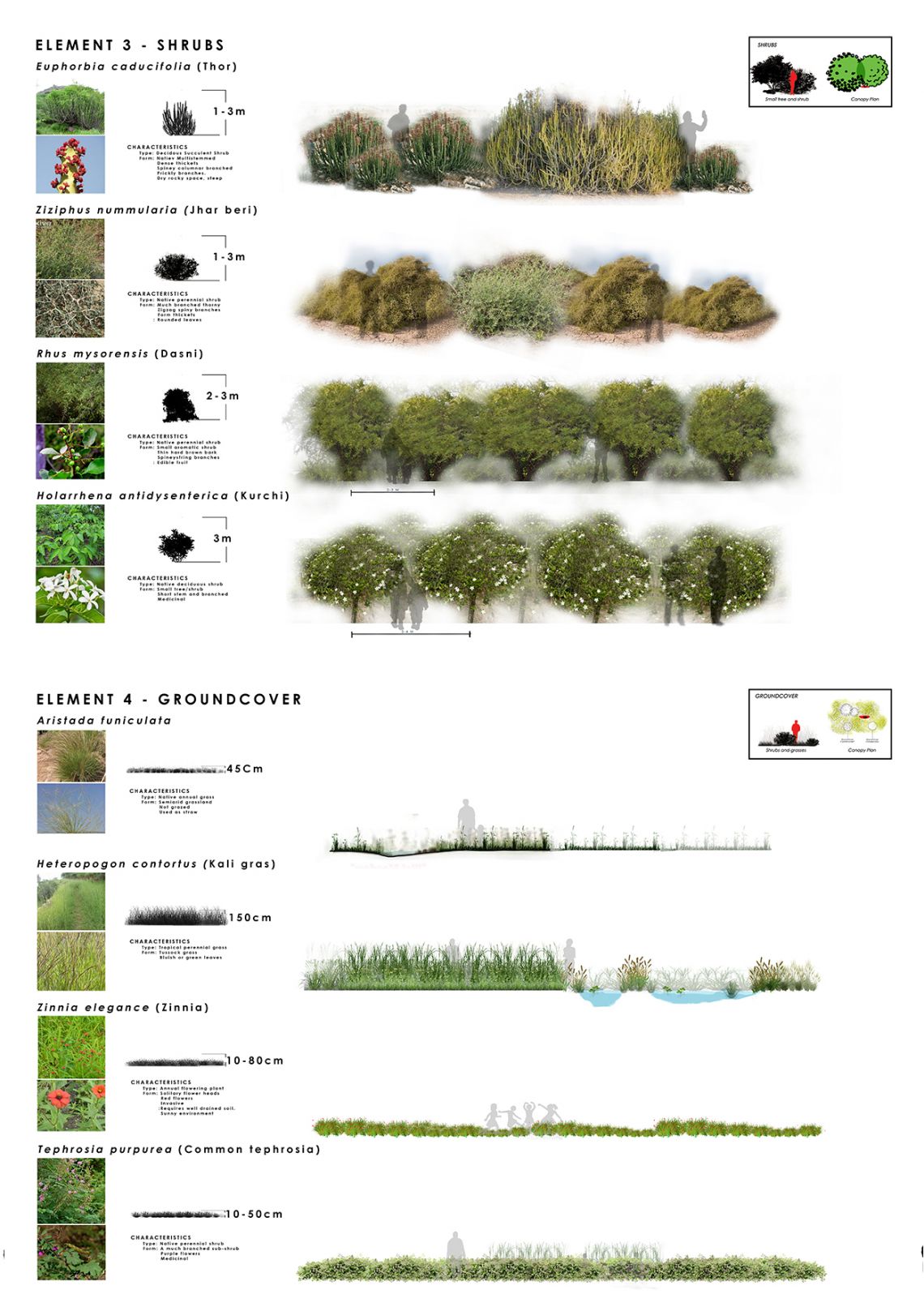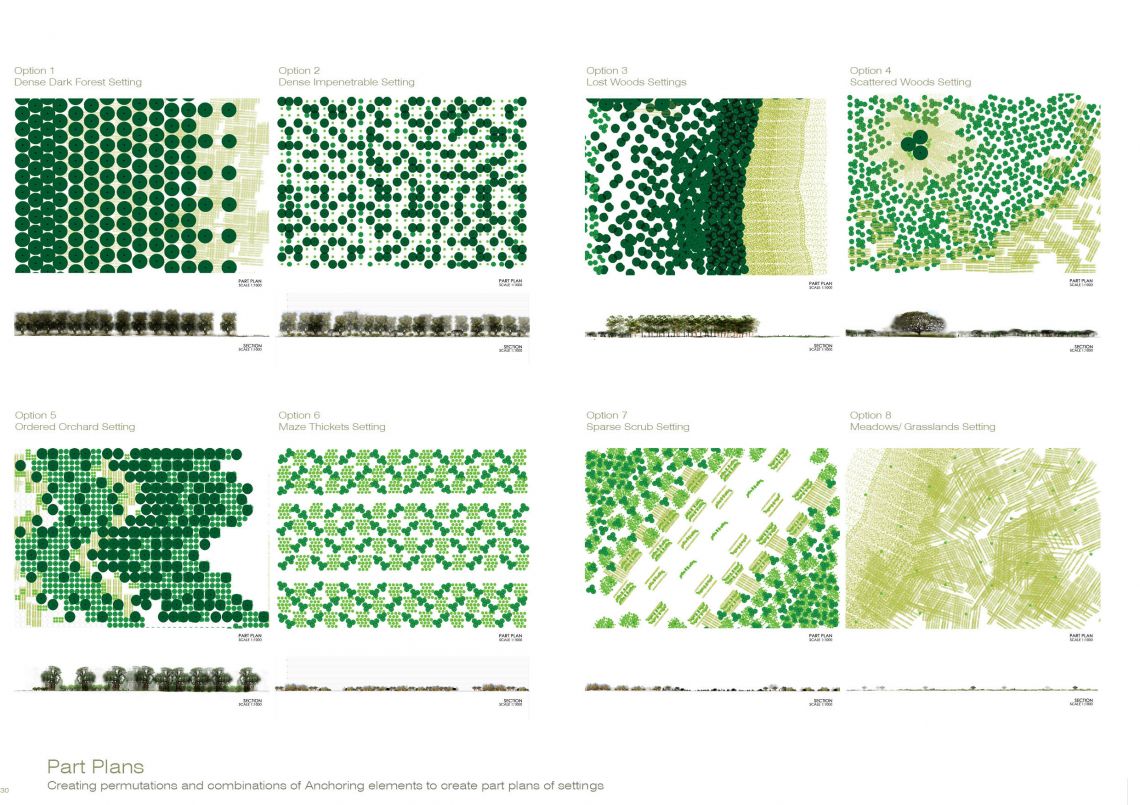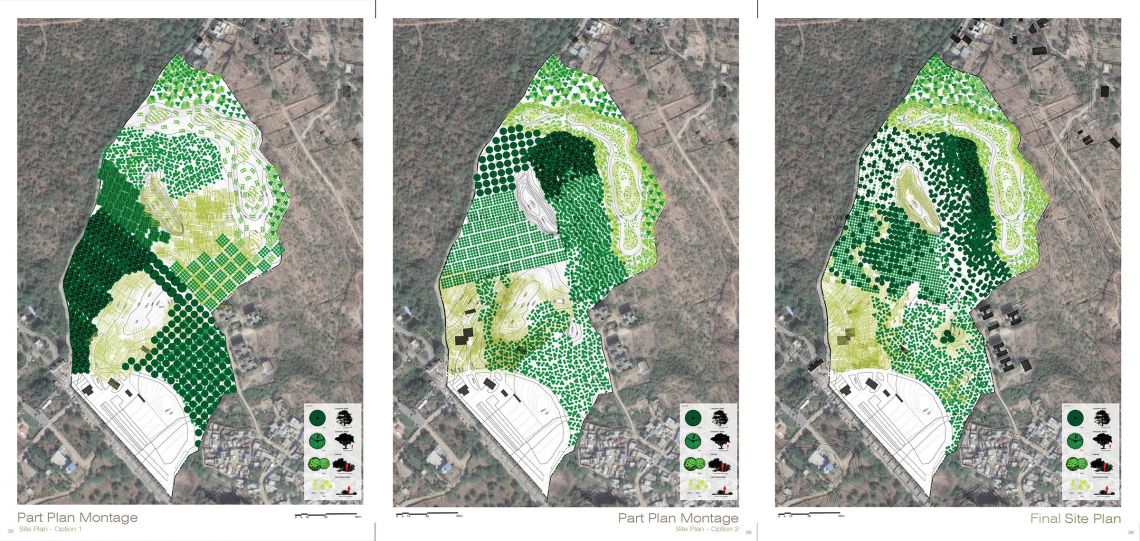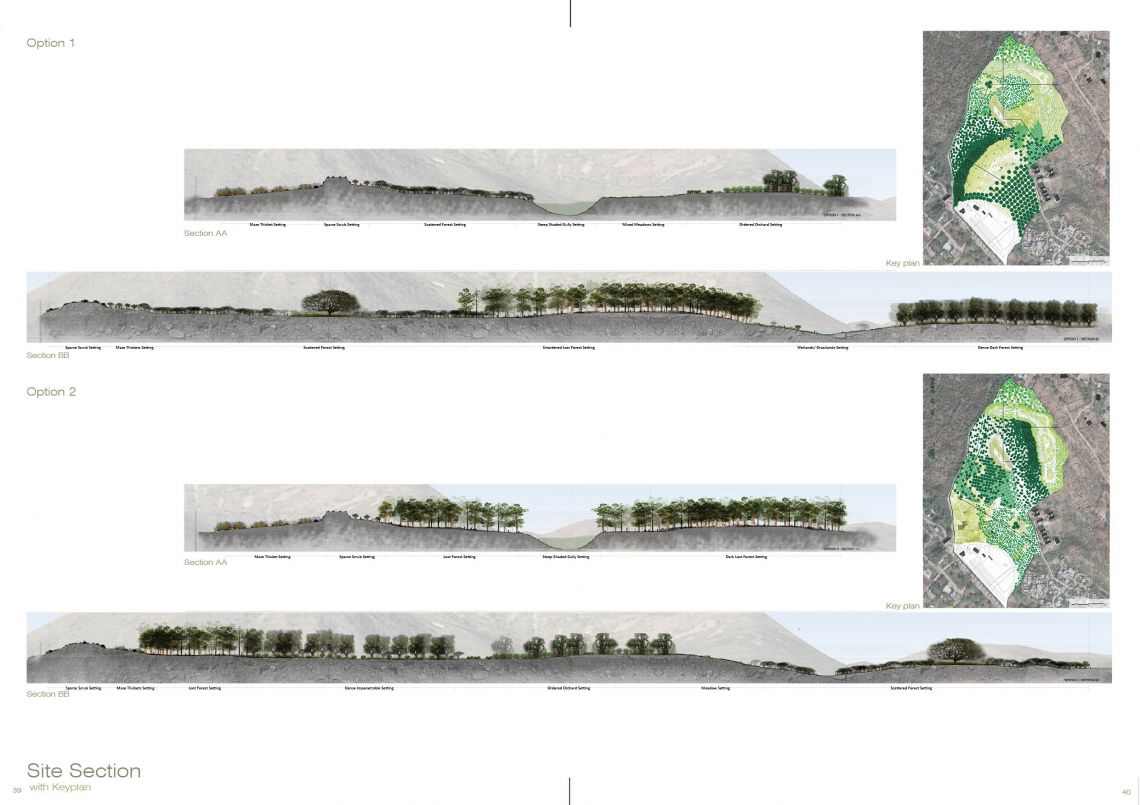Your browser is out-of-date!
For a richer surfing experience on our website, please update your browser. Update my browser now!
For a richer surfing experience on our website, please update your browser. Update my browser now!
Contrastingly different patches of the forests identified based on the placement of its components and their character that contribute to making it different from the others, will be interpreted through the lens of transitioning through enclosures; their degree of vision and possible movement.
Based on this study, elements that mainly contribute to the character of these spaces are selected and systems are designed on the basis of exaggerated combinations with other supporting elements to bring emphasis. These systems are then placed on site on the basis of site conditions to achieve the intended spatial experiences.
The purpose of this study is to identify the elements of the forest that contribute certain character to different spaces, exaggerate them in a way to create a landscape that would induce in the user, an experience of taking a walk in the woods.
Emphasis on exaggerated elements in different settings can be an opportunity to introduce the users to the dominant or the less known native species that exist in the forest.
